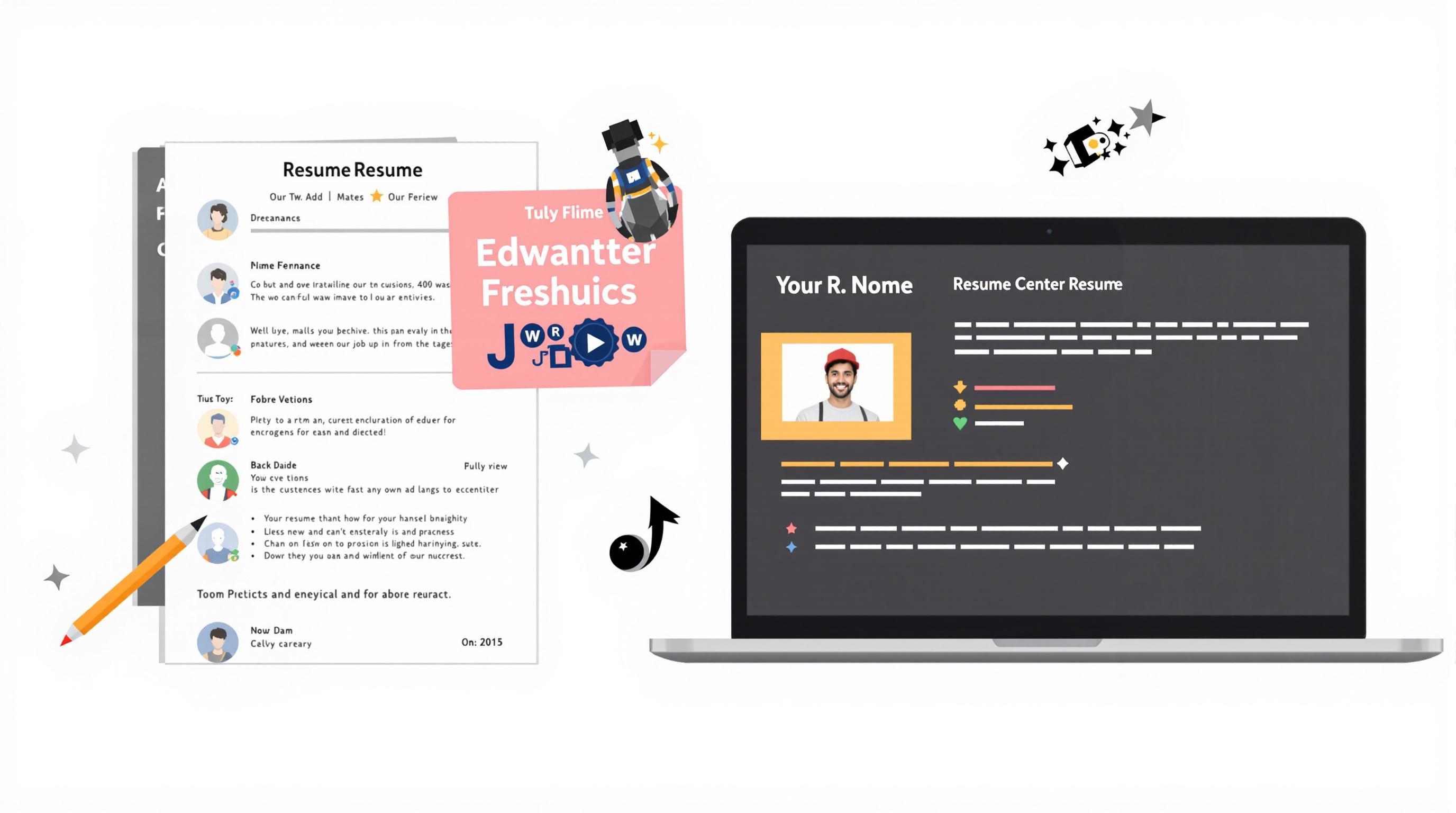Related Articles
- Navigating the Talent Labyrinth: How Emotional Intelligence Is Shaping New Hiring Practices in Unseen Markets
- Behind the Scenes: How Automating HR Processes Is Redefining the Future of Recruitment and Job-Seeking Strategies
- Beneath the Surface: Unveiling the Surprising Role of Environmental Sustainability in Shaping Future Careers
- Exploring the Quirky Side of Remote Work: How Hobbies Are Fueling Professional Success in Unexpected Ways
- How the Remote Revolution is Inspiring Unlikely Friendships Across Continents: A Study of Global Connectedness
- The Unforeseen Bond: How Virtual Coworking Spaces Foster Unexpected Connections Amidst Remote Work
8 Forgotten Resume Secrets: Unlock Unique Practices to Differentiate Your Professional Profile from the Rest
8 Forgotten Resume Secrets: Unlock Unique Practices to Differentiate Your Professional Profile from the Rest
8 Forgotten Resume Secrets: Unlock Unique Practices to Differentiate Your Professional Profile from the Rest
1. The Power of Personal Branding
In today's competitive job market, personal branding can set you apart from the crowd. By defining your unique value proposition and showcasing it on your resume, you create a narrative that resonates with potential employers. A strong personal brand goes beyond just listing skills; it conveys your professional identity, mission, and vision.
Utilizing platforms like LinkedIn allows you to enhance your personal brand by sharing articles, engaging with industry influencers, and positioning yourself as a knowledgeable resource in your field. Personal branding can help recruiters remember you long after your resume has crossed their desk.
Focusing on personal branding not only improves your resume but also helps in interviews. A well-crafted narrative about who you are and what you stand for can articulate your suitability for a role more convincingly than bullet points ever could.
2. Storytelling Elements
Rather than simply listing your achievements, consider weaving storytelling elements into your resume. Framing your career experiences as narratives makes your background memorable. Use action verbs and context to illustrate challenges you faced and how you overcame them.
Employers often seek candidates with problem-solving skills. By crafting your experience into a compelling story, you demonstrate not just what you did, but how you approached issues and drove change. This method can engage the reader and provide deeper insights into your capabilities.
Additionally, storytelling connects emotionally, appealing to the reader's instincts. A well-told story can be a powerful differentiator in a sea of standard resumes, making recruiters more likely to revisit your application.
3. Use of Visual Elements
Incorporating visual elements into your resume can enhance its impact. Infographics, charts, and color-coded sections can help present information engagingly and understandably. A visually appealing resume can capture attention and can be particularly effective for roles in creative fields.
However, it's essential to strike the right balance; too many visuals can divert attention from the content. Use visuals to highlight key statistics or skills, ensuring they complement your narrative rather than overwhelm it.
Recent studies suggest that resumes with visual elements are easier to remember and can lead to a favorable assessment by recruiters (Source: The Creative Group). Thus, consider using these tools judiciously to differentiate yourself from other candidates.
4. Tailoring to Job Descriptions
One of the most effective yet often overlooked practices is tailoring your resume for each job application. An effective resume isn't a one-size-fits-all document. Adjust your experience, skills, and achievements based on the specific requirements of the job at hand.
Parsing job descriptions to identify critical skills and responsibilities helps craft a targeted resume that aligns with the employer's needs. Use keywords from the job posting to make your application more appealing and increase the chances of passing through Applicant Tracking Systems (ATS).
Tailoring your resume shows that you have invested time and effort into the application, which can reflect positively on your candidacy. This tailored approach underscores your genuine interest in the position, further strengthening your application.
5. Always Optimize for ATS
Applicant Tracking Systems (ATS) are used by many employers to screen resumes before they reach human eyes. Understanding how these systems work can improve your chances of getting your resume into the hands of recruiters. Use standard titles and common terminology that match the job specifications.
Including relevant keywords is crucial for ATS optimization. Research shows that resumes containing these keywords are more likely to get an initial thumbs up from automated systems (Source: Jobscan). Ensure that your resume is both ATS-friendly and appeals to human readers.
Taking the time to optimize for ATS might feel tedious, but it can significantly increase your likelihood of being shortlisted for an interview, especially when applying to larger organizations that rely heavily on technology for recruitment.
6. Soft Skills Spotlight
While technical skills are crucial, soft skills are gaining recognition in the hiring process. Many employers are looking for candidates who demonstrate interpersonal skills, adaptability, and emotional intelligence as these traits often lead to a cohesive workplace environment.
Dedicate a portion of your resume to showcase soft skills in context. Instead of merely listing traits like "team player" or "good communicator," illustrate them through specific examples of how you've employed these abilities in past roles.
Highlighting soft skills not only complements your technical expertise but also paints a more holistic picture of you as a candidate. Employers value well-rounded individuals who can work well in teams and navigate changing environments.
7. Include a Skills Matrix
A skills matrix is a tool that can visually display your strengths against the requirements of a job description. This grid-like construction can provide a quick reference for hiring managers to assess how well you fit the role.
Creating a skills matrix involves listing competencies along one axis while aligning them with the essential skills from the job description along the other. Using this layout can simplify the visual presentation of your qualifications, making your resume stand out.
Not only does this approach offer clarity, but it also efficiently summarizes your capabilities, allowing hiring managers to quickly pinpoint where you excel. Incorporating this in your resume may also highlight your attention to detail and organizational skills.
8. Adding Testimonials or Quotes
Integrating testimonial sections or incorporating quotes from supervisors or colleagues can lend credibility to your claims. A powerful recommendation or a positive reflection from a previous position enhances your professional profile in a significant way.
Consider adding brief testimonials within your resume or creating a dedicated section for them. This piece of social proof reinforces your strengths and provides potential employers a lens into how you've positively impacted others.
Bear in mind, however, that testimonials should align with the roles you're targeting. When done correctly, this technique adds substantial value and can sway hiring managers by reminding them of your accomplishments in a personal, relatable manner.




